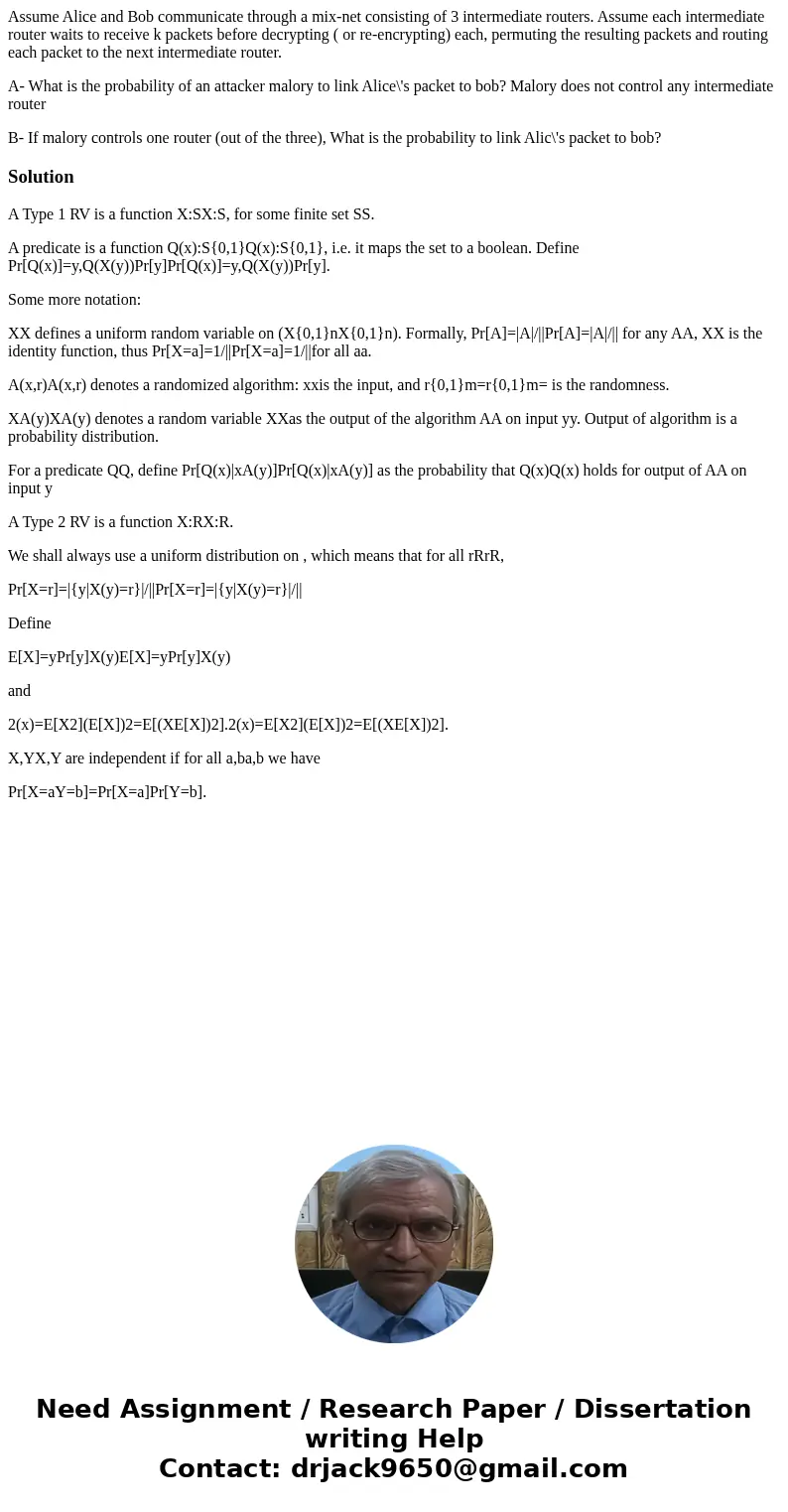Assume Alice and Bob communicate through a mixnet consisting
Assume Alice and Bob communicate through a mix-net consisting of 3 intermediate routers. Assume each intermediate router waits to receive k packets before decrypting ( or re-encrypting) each, permuting the resulting packets and routing each packet to the next intermediate router.
A- What is the probability of an attacker malory to link Alice\'s packet to bob? Malory does not control any intermediate router
B- If malory controls one router (out of the three), What is the probability to link Alic\'s packet to bob?
Solution
A Type 1 RV is a function X:SX:S, for some finite set SS.
A predicate is a function Q(x):S{0,1}Q(x):S{0,1}, i.e. it maps the set to a boolean. Define Pr[Q(x)]=y,Q(X(y))Pr[y]Pr[Q(x)]=y,Q(X(y))Pr[y].
Some more notation:
XX defines a uniform random variable on (X{0,1}nX{0,1}n). Formally, Pr[A]=|A|/||Pr[A]=|A|/|| for any AA, XX is the identity function, thus Pr[X=a]=1/||Pr[X=a]=1/||for all aa.
A(x,r)A(x,r) denotes a randomized algorithm: xxis the input, and r{0,1}m=r{0,1}m= is the randomness.
XA(y)XA(y) denotes a random variable XXas the output of the algorithm AA on input yy. Output of algorithm is a probability distribution.
For a predicate QQ, define Pr[Q(x)|xA(y)]Pr[Q(x)|xA(y)] as the probability that Q(x)Q(x) holds for output of AA on input y
A Type 2 RV is a function X:RX:R.
We shall always use a uniform distribution on , which means that for all rRrR,
Pr[X=r]=|{y|X(y)=r}|/||Pr[X=r]=|{y|X(y)=r}|/||
Define
E[X]=yPr[y]X(y)E[X]=yPr[y]X(y)
and
2(x)=E[X2](E[X])2=E[(XE[X])2].2(x)=E[X2](E[X])2=E[(XE[X])2].
X,YX,Y are independent if for all a,ba,b we have
Pr[X=aY=b]=Pr[X=a]Pr[Y=b].

 Homework Sourse
Homework Sourse